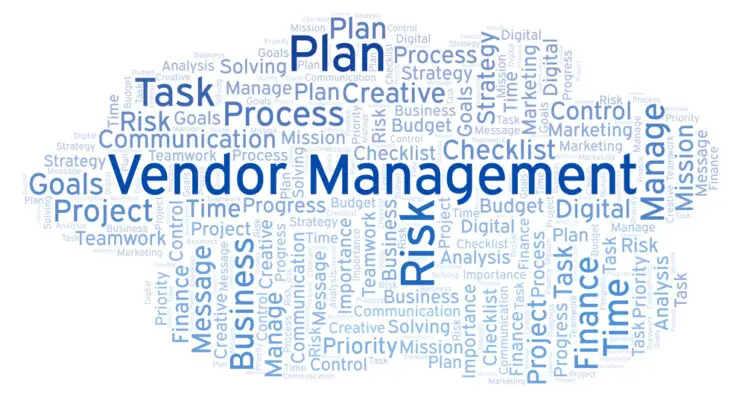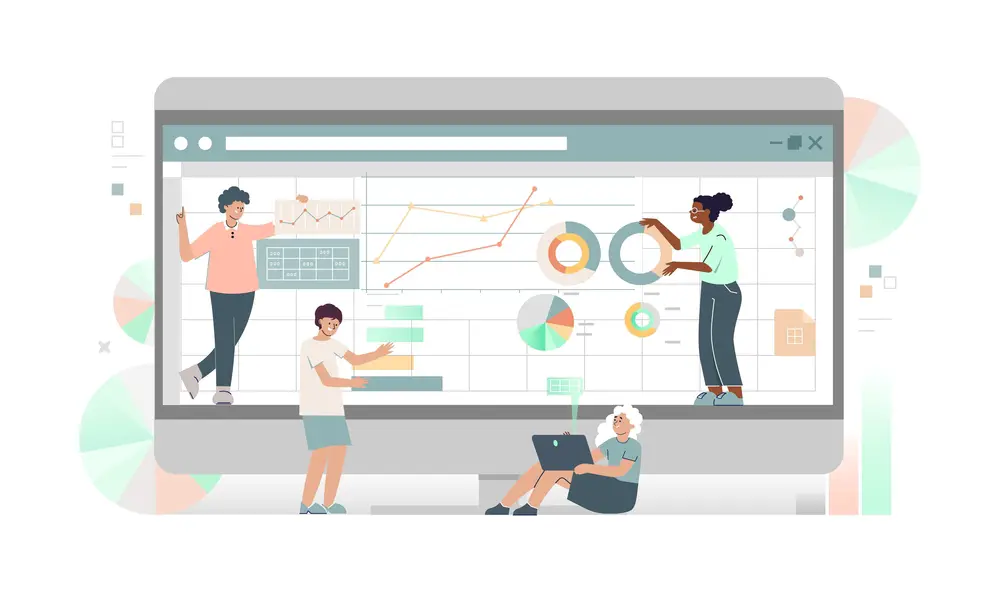Software Lifecycle Management (SLM) is the process of planning, developing, testing, and deploying software. The goal of SLM is to ensure that software meets the needs of the business processes or users.
SLM is a complex process with many moving parts. There are several risks associated with SLM, including
- Projects not being completed on time or within budget,
- Scope creep (i.e., the addition of features or functionality that was not originally included in the project plan)
- Poor quality software that does not meet the needs of users
- Security vulnerabilities
- Compliance issues
Fortunately, there are some things that businesses can do to mitigate these risks, including:
-Developing a clear and concise project plan.
-Working with an experienced and reputable software development team. Using a secure and robust software development platform
-Automating as much of the software development process as possible
-Performing regular quality assurance testing
-Making security a top priority
Software Development is an iterative process, meaning it typically involves multiple phases in which mistakes or issues can be identified and resolved. The lifecycle of a software project usually begins with the planning stage, where the development team identifies project requirements and sets objectives for success.
Next comes the design stage, where developers create models that define how the software should work. After this comes development, where the programming code actually gets created. During this phase, developers use tools like version control to keep track of changes and manage issues.
Finally, there’s testing – a critical step to ensure everything works as expected before it goes live. It’s important for teams to implement Risk Management strategies for every phase of Software Development – from identification and assessment through monitoring risk levels – in order to make sure projects are successful and meet overall objectives.
Software development has many techniques to minimize project risk. Risks are situations that may lead to loss of value in a particular situation. Unnecessary risk is often costly, particularly within the IT field, where most software projects are risky.
Software development projects can present a lot of risks, as they often require large investments of both time and money. Fortunately, there are various techniques available to minimize project risk.
These include methods like prototyping, which helps tech teams identify potential obstacles and get stakeholder feedback before committing too far into the process, and Agile methodology – a flexible approach that adapts to changes in scope, technology, or timeline.
Software is an increasingly complex part of our lives and, when something goes wrong with it, the consequences can be disastrous. That’s why effective software lifecycle management is so important; taking the right steps to ensure your applications are secure and functioning correctly will help protect your business from any potential risks caused by a faulty system.
In this blog post, we’ll cover some of the most common software lifecycle management risks as well as ways in which you can mitigate them. We’ll explore how regularly applying security patches, increasing user authentication capabilities, investing in quality assurance testing, and more can help reduce risk while aligning with industry standards like SOX or HIPAA.
Keep reading to learn more about managing these vital parts of IT operations and risk management process involved in software risk assessment.
Introduction to Software Lifecycle Management Process
The software lifecycle is a crucial aspect of any and all development processes. It can be likened to an assembly line of components, each one necessary to build a working product that meets customer expectations.
There are several steps and stages of the software lifecycle that must go hand-in-hand in order for software development to run smoothly. From conception to retirement, understanding the ins and outs of this cycle is essential for crafting successful applications.
What is the Software Lifecycle?
The software lifecycle is simply the process by which software projects are created from initial concept to eventual retirement or replacement. This cycle includes a variety of phases, each with distinct tasks that need to be carried out for development and implementation to occur.
The different stages of this process provide software designers with an outline for planning and executing projects in an efficient manner. It also helps optimize resource management so as not to overspend on unnecessary efforts while still maintaining quality assurance throughout the entire process.
The Different Phases of the Software Lifecycle
Understanding what happens during each step of the software development cycle is key in producing dependable products and services:
Conception
This first stage involves coming up with an idea or concept for a software solution, measuring its potential business impact, and gaging its feasibility. During this phase, teams need to consider what kind of user base would benefit most from the application’s features.
Create diagrams depicting how users will interact with it, as well as conduct market research studies to gauge customer demands or preferences regarding such solutions.
Requirements Analysis
The second phase revolves around understanding precisely what users expect from an application or product before creating any code whatsoever. Requirements analysis often consists of collecting feedback from stakeholders.
Organizing these requirements into categories (elevation stories, use cases), testing them against budgets or timelines provided by sponsors or investors, while also validating them through prototypes early on in design efforts.
Design
Moving onto designing itself; once requirements have been evaluated competitors analyzed technologies chosen, designers begin putting together how users interact with actual interfaces of applications or products being developed.
While doing so, they’re working closely with developers, so coding takes into account the designs provided. Of course, user experience specialists offer their input too — making sure UX principles shine clearly throughout designs.
Coding/Implementation
In actual coding, developers take the information gathered during early discovery stages, and break problems down into smaller components solvable through programming.
They then select appropriate languages algorithms libraries frameworks build out back-end environments databases etc deploy perfected code towards production or launch environments ready for real-world testing.
Testing Phase
After coded versions is released QA engineering teams jump into action ensuring usability accessibility, performance, security compatibility reliability scalability l operations work correctly when running under various conditions devices operating systems.
Bugs found get registered accordingly and sent back to programmers developers fix the code and make sure tests run until no defects remain system’s considered “stable” based released version open public Beta versions get tested heavily group potential users.
The users provide additional feedback before the version officially hits markets shelves and digital stores anywhere, deployable through internet tubes directly onto people’s devices and hardware platforms.
Deployment/Release
Once the live environment gets approved finalized files are pushed out there either manually through manual downloading automated pull methods installers auto-updates via the cloud etc depending on the needs size of the complexity the project team opts for.
Finally, post-deployment activities need to be taken care customer success reps evaluate client satisfaction offer assistance needed time bugs reported get handled quickly, possible issues faced addressed soon implementation support teams help understand and utilize efficaciously effectively product launch dates announced.
Publicity campaigns start rolling clients’ partners’ end-user feedback collected evaluated incorporated either subsequent releases feature enhancements updates.
Documentation training sessions conducted clarify doubts related to usage effectiveness product better alongside tracking KPIs understand gain deeper insights customer behaviour needs evolve accordingly.
Stop/Retirement
Lastly after satisfactory period usage demand marked drop aging technology suitably replaced companies decide whether keep maintain owning servers hosted environments move alternatives like SaaS cloud computing services.
Obsolete products retired, discarded altogether, releasing memory storage space infrastructure costs involved defined deadlines all come play determining whether continuing further maintained longer timeframe associated costs don’t outweigh expected benefits keeping running certain point put forthwith.
The software has been used by the government to provide services for several decades. It’s software architectures and techniques change rapidly. Business and management risks are still associated with software lifecycles and management processes that need to be mastered.
The software focuses on the findings that a federal investigation found to demonstrate control over software life cycles. The project did focus on the management of the under-investigation government agency.
Importance of Risk Management in Software Development
Software engineering projects is an intricate process that involves large teams and large budgets. Ultimately, it’s possible to fail to take advantage of the opportunity to develop software products.
Project managers may see risk management in software and the associated tasks as additional effort and expense. Those thoughts are wrong and can cause costly damage if a plan fails. Adequate risk management will save the cost of unmitigated disasters.
Risk management helps teams identify issues before they become costly problems. By assessing potential risks at the beginning of a project, developers can plan for worst-case scenarios and make contingency plans if things don’t go according to plan.
In risk management, teams can also reduce or eliminate risks by using better processes or taking preventative measures upfront. For example, teams might decide to use open-source components instead of writing code from scratch so they can avoid copyright issues later on.
One common flaw in many software projects is that they often underestimate how long things will take or miss key elements of a project entirely.
Risk management helps address this issue by forcing project managers and developers to realistically evaluate their resources and capabilities to ensure deadlines are met without sacrificing quality.
This includes evaluating how much time each task should take based on its complexity and assessing whether there are enough people with certain skill sets allocated to complete the job efficiently and effectively.
Proper risk management also plays an important role in ensuring quality assurance procedures are followed correctly throughout the development process. It helps developers monitor progress by identifying areas where testing may be required or where bugs exist.
Good risk management protocols help teams spot potential security threats and data breaches that could have catastrophic results if not proactively addressed and resolved quickly.
Timely identification of possible issues prevents them from ballooning into large problems when nothing can be done about them anymore – saving time, money, and trouble for any team involved in software development.
Taking proactive steps now to implement strong strategies for identifying and mitigating risks helps teams write safer code faster while producing applications that meet customer needs more reliably over the long term.
Software Risk Planning
Software risk planning is a structured approach to assessing potential risks associated with developing, implementing, or using software products or solutions. The process involves carefully identifying areas for improvement by analyzing expected outcomes.
Understanding how the software could be affected by external factors such as changes in technology or competition. This analysis then helps inform decisions on allocating resources to achieve desired results more efficiently and effectively.
Software risk plans include finding preventives to reduce the likelihood that different risks occur.
Software Risk Monitoring
Software risks are monitored for each phase of product development, and the checks should occur regularly. The company should monitor significant changes to risk management plans and write project management reports.
Risk assessments should take place, and those with the lowest impact probability should be eliminated. Risks need to be investigated and prepared through emergency and preventative strategies.
Software Risk Monitoring (or SRM) is a method of assessing the potential risks associated with the development, implementation, and maintenance of software applications. SRM helps organizations to understand their exposure to risk during the development process and identify areas where additional assurance or attention is needed.
It involves periodic review and refinement of an organization’s software security processes, procedures, and controls. The goal of SRM is to maximize software quality while minimizing potential risk.
Benefits of Software Risk Monitoring
Through adopting software risk monitoring, companies can proactively address vulnerabilities in their software applications before they become serious threats. This proactive approach can help to prevent incidents, reduce downtime, minimize financial losses, and protect customer data from malicious actors.
Additionally, by understanding their exposures to risks in advance, companies can more easily develop effective mitigation strategies for known risks which could result in improved development timescales and cost reductions.
How Does Software Risk Monitoring Work?
SRM typically consists of four primary steps: Define Risks, Monitor Risks, Analyze Results, and Implement Solutions. First, an organization must define its risks by identifying potential threats specific to its business operations.
The next step involves actively monitoring identified risks through testing systems patterns or “sensing” technologies such as network traffic analysis tools or automated scanning services.
After results have been obtained from this monitoring phase, they can be analyzed to determine which threats are most likely scenarios given the organization’s particular context and technology landscape.
Finally, solutions should be implemented, which may include creating policies or implementing technical solutions such as encryption or firewalls that are tailored toward addressing each identified risk.
Challenges Involved in Implementing Software Risk Monitoring
One challenge related to implementing SRM is identifying appropriate metrics for measuring success due to the wide range in scope of different threat types that might exist within any given organization’s environment.
Some organizations may not have adequate resources allocated for testing or implementing solutions which could lead to overselling expectations when discussing outcomes with stakeholders or customers regarding security posture improvements from engaging with SRM activities.
Lastly, third-party service providers may not properly utilize best practices when executing tests leading to false positives or overlooking certain threats that may exist under certain conditions. This leaves them unaddressed by an organization’s security protocols without proper communication between teams about what work has been conducted prior by external service providers.

What are the 4 Phases of the System Development Life Cycle?
SDLC has four phases, namely development, maintenance, auditing or dismantling, including an evaluation of a risk management plan.
What Practices Will Help You Mitigate Risks?
Firstly you must undertake risk management processes depending on the risk management framework of the organization. Then, analyze the risks and create a structure that allows for better analyses.
Conclusion
Software Lifecycle Management is a complex process with many risks. However, there are several things businesses can do to mitigate these risks. By following best practices for SLM, businesses can ensure that their software projects are completed on time, within budget, and meet the needs of their users.

Chris Ekai is a Risk Management expert with over 10 years of experience in the field. He has a Master’s(MSc) degree in Risk Management from University of Portsmouth and is a CPA and Finance professional. He currently works as a Content Manager at Risk Publishing, writing about Enterprise Risk Management, Business Continuity Management and Project Management.




